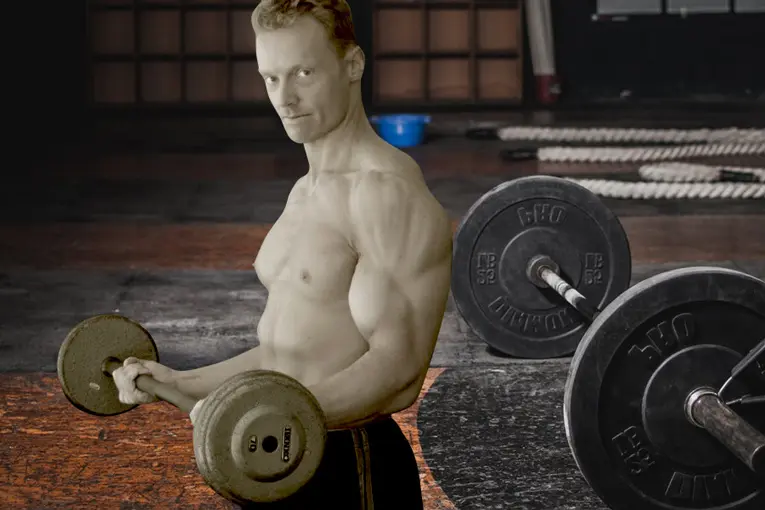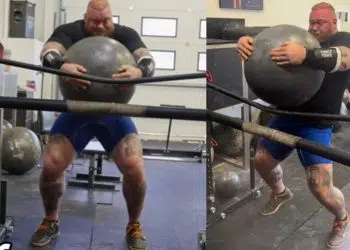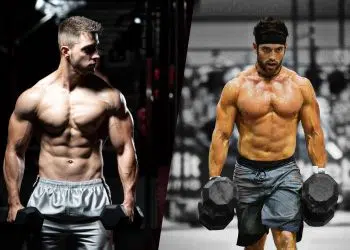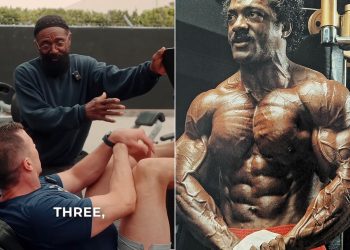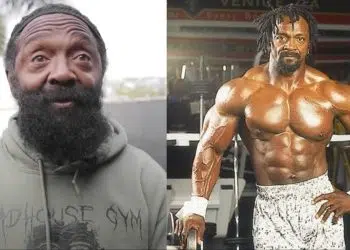For many of us over forty, pushing heavier and heavier weight just isn’t cutting it anymore. Sure, when we were twenty the gains came a bit easier despite using less than perfect form and a preference for heavier lifts.
Now we’re faced with either downshifting our efforts (due to some aches and pains) or changing our training style altogether. Here, I want to focus on the latter. I want to lay out some of the universal challenges you may be experiencing as well as come up with some real, significant, results-producing solutions.
Over 40 challenges
If you’re anything like me, you’ve had your fair share of strains, dents and dings over the years. As an avid lifter for over 30 years, I’ve been pushing my body with a myriad of training styles from pure strength and bodybuilding to cross training and bodyweight-only training.
Strained shoulder joints, tired knees, touchy elbows, and a sore lower back have crept into my daily life. Now, I’m a firm believer that it’s got more to do with miles versus years, but my age doesn’t help matters.

As I’ve gotten older my priorities have shifted considerably. No longer competing in bodybuilding, I’m not as concerned with focusing so much on strength to facilitate building muscle. I’ve almost completely shifted purely to hypertrophy style training in the gym. Life, family, and motivations have dictated this change.
But the funny thing is, building more muscle fits nicely into my priorities. You see, there’s more than one way to grow muscle. Lifting until the muscle is exhausted is a key factor no matter if you lift with light weights or heavy weights. Plus, most of my ailments listed earlier have either decreased or disappeared.
Level Up Your Fitness: Join our 💪 strong community in Fitness Volt Newsletter. Get daily inspiration, expert-backed workouts, nutrition tips, the latest in strength sports, and the support you need to reach your goals. Subscribe for free!
Lighter weight can build muscle
To illustrate, let’s look at a 2016 study done by McMaster kinesiology professor Stuart Phillips, PhD, et al who took 49 college-age men through a 12-week total-body resistance training program. Two groups were formed. One performed high reps (30-50% of their one-rep max for 20-25 reps per set) and the other performed lower reps (75-90% of their one-rep max for 8-12 reps per set).
Both groups used four exercises (leg press, barbell bench press, leg extension machine, and shoulder press machine) while training to muscular failure. After the 12 weeks, muscle mass was tested and resulted in similar gains in strength and size.
I’ll state it again: Both groups resulted in equal gains in strength and size.
This is great news for the over forty crowd. Not only are heavy weights and low reps unnecessary for hypertrophy, but we can still go into the gym and have a pretty intense workout without destroying more of our high-mileage joints and spine.
A change in thinking
I know what you’re thinking. You’ll miss the heavy weights, the feeling of lifting more and more, and you may even fear losing muscle mass along the way.
The key factor in the above study wasn’t the amount of resistance, it was the intensity and the fact that both groups trained each exercise to muscular failure. So, failure was the shared attribute. Now, the group using lighter loads has the distinct advantage of utilizing time under tension. Muscle fibers were stressed for longer periods of time signaling the hypertrophic response.
However, using a lighter load isn’t a green light for less intensity. Some will experience a greater intensity by attempting to achieve muscular failure with a higher rep count – maybe even much more than a lower rep, higher load set. Normally, we could squeeze out an extra rep or two as we approach the end of a heavy set. Conversely, with a lighter load you’ll find you can potentially perform several more reps to get closer to failure.
An added benefit is that you’ll start to feel more stress in the actual muscle group worked versus in your tendons and ligaments. You’ll create a much stronger mind to muscle connection.
All it takes is a shift in your mindset, becoming acclimated to the new stress, and letting go of the ego from long ago.
Your to-do list
With your new way of thinking and renewed enthusiasm, let’s look at a few key points before laying out your new battle plan for more muscle.
- Experiment with higher rep ranges. I tend to stay in the 10 to 20 rep range for almost every body part. Shoot for around 10 to 15 for upper body moves and 20 to sometimes 25 for lower body. But my rule of thumb is to stay away from the single digits as much as possible. If it happens to dip into that range, I’ll lighten the load for the next set.
- At first you may not have the need to increase weight with each set as you normally may do with traditional pyramiding. With higher reps, it may take some time for your body to acclimate to the new stress.
- Using a lighter load also isn’t a green light to rush your set or use subpar form. Don’t speed through each rep just to finish. Remember, the goal is more time under tension. Take advantage of that.
- Rest around 45 to 60 seconds for larger muscle groups such as chest, back, and quadriceps. Shoot for 30 second rests for arms, shoulders, calves, and hamstrings. Again, another key factor in building muscle mass is recruiting more muscle fibers and fatigue.
- Keep your ego in check and have patience. It’ll be tempting to add more weight, which will lower your rep count. This may seem okay to do occasionally, but when joint pain creeps back into your life, you’ll start to regret it.
A sample program for more muscle after 40
Below is a sample program putting the above philosophy into practice. As with almost all my programs I like to offer two workouts for each muscle group. This not only covers more angles and exercises; it also keeps things from becoming too stale.
You’ll see a workout A and workout B. Simply perform all “A” workouts On Mondays and Tuesdays then “B” workouts on Thursdays and Fridays. . This is an intermediate program that has you training each body part twice per week.
Monday
Workout A
Chest, back, shoulders, and abs
Incline bench barbell press 3-4 x 10-20
Flat bench dumbbell press 3-4 x 10-20
(Optional) Feet-elevated push up 2 x as many as possible
Wide-grip pull-up 3-4 x as many as possible
T-bar machine row 3-4 x 10-20
(Optional) Close-grip pulldown 3 x 10-20
Dumbbell side lateral raise 3 x 15-20
Bent-over dumbbell lateral raise 3 x 15-20
Dumbbell shrug 3 x 10-15
Superset: Lying leg raise with cross bench crunch V-up 3 x 20 each
Tuesday
Workout A
Triceps, biceps, calves, quads, and hamstrings
Barbell curl 2-3 x 10-20
Incline bench dumbbell curl 2-3 x 10-20
Lying triceps barbell extension (nosebreaker) 2-3 x 10-20
V-bar pressdown 2-3 x 10-20
Standing calf raise 2-3 x 10-20
(Optional) Seated calf raise 2-3 x 10-20
Leg extension 2-3 x 15-20
Leg press 2-3 x 15-20
Lying leg curl 2-3 x 15-20
Thursday
Workout B
Chest, back, shoulders, and abs
Incline bench dumbbell press 3-4 x 10-20
Flat bench barbell press 3-4 x 10-20
(Optional) Floor push up 2 x as many as possible
Close grip pull up 3-4 x as many as possible
Bent-over barbell row 3-4 x 10-20
(Optional) Wide grip pulldown 3 x 10-20
Dumbbell shoulder raise 3 x 15-20
Dumbbell upright row 3 x 15-20
Barbell shrug 3 x 10-15
Superset: Leg raise with exercise ball crunch 3 x 20 each
Friday
Workout B
Triceps, biceps, calves, quads, and hamstrings
Dumbbell curl 2-3 x 10-20
Cable curl 2-3 x 10-20
Seated overhead rope extension 2-3 x 10-20
Straight bar pressdown 2-3 x 10-20
Seated calf raise 2-3 x 10-20
(Optional) Standing calf raise 2-3 x 10-20
Single leg press 2-3 x 15-20
Walking lunge 2-3 x 15-20
Seated leg curl 2-3 x 15-20
In conclusion
Try this program out for the next four to six weeks. Keep track of your progress, pain points, and overall recovery. I have a good feeling you’ll start seeing some pretty great results and become a true believer that muscle after forty can be just as exciting as when you were twenty.

